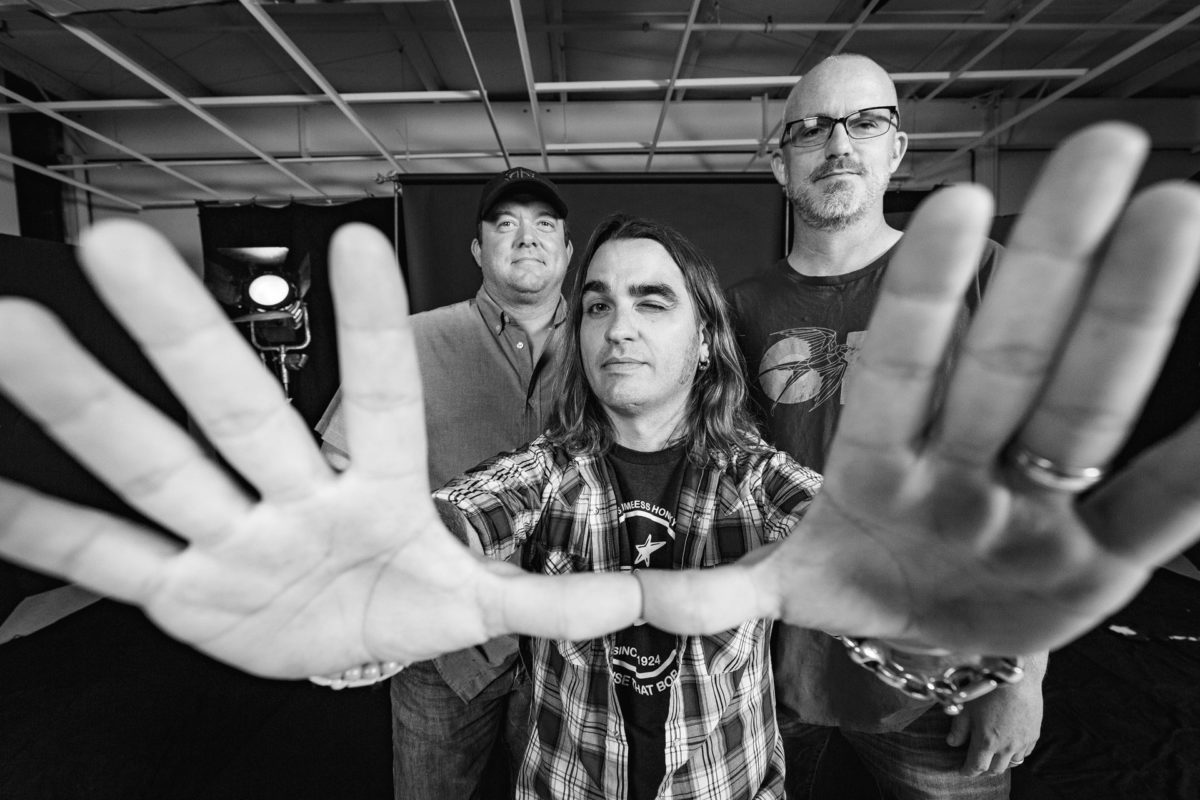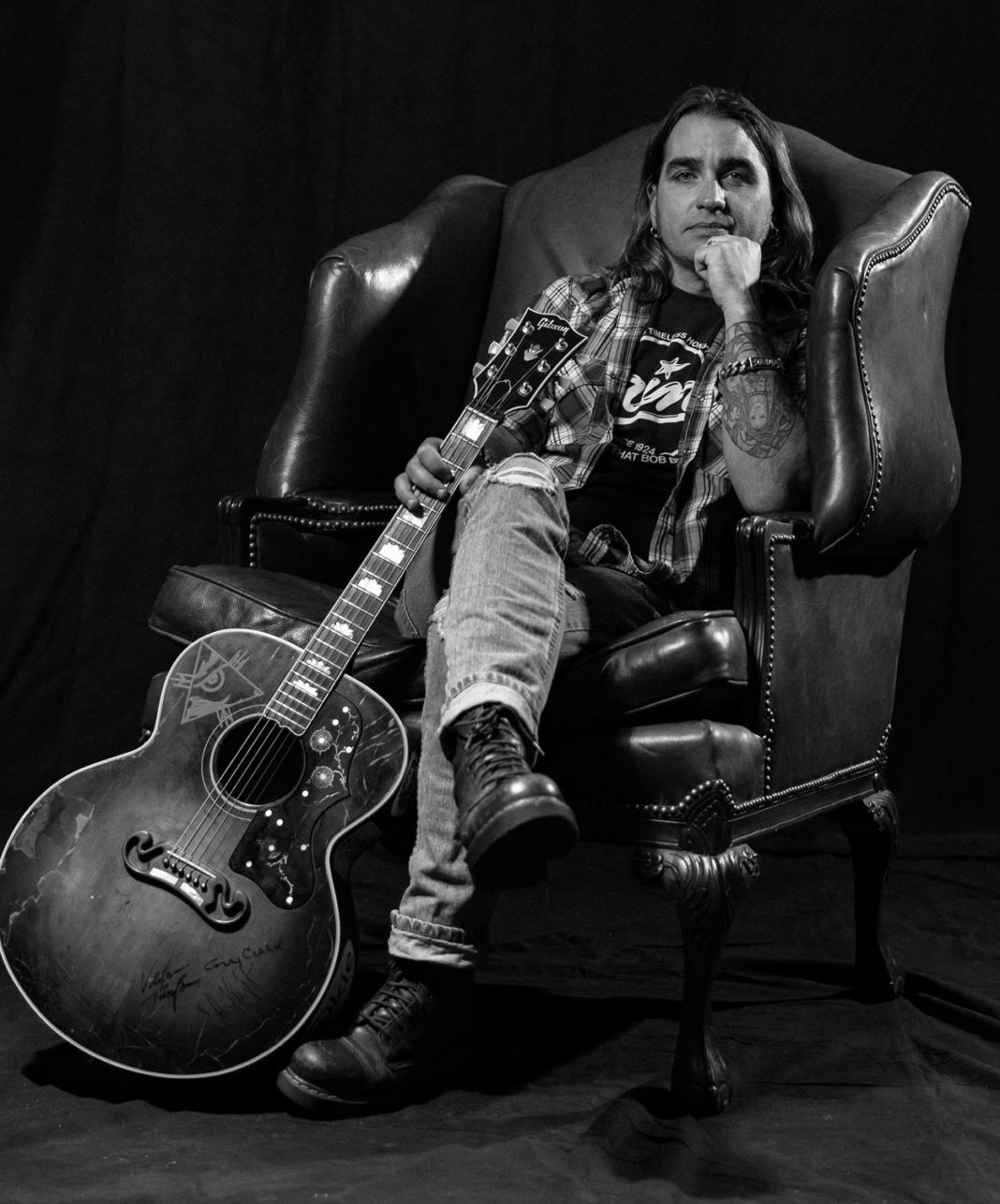More than 30 years after it first began rising out of the Oklahoma clay, in and around a funky, old two-story farmhouse outside of Stillwater, the music that came to be known as Red Dirt continues to win fans and influence performers worldwide. Here are a couple of recent developments involving the genre:
First came the news that Cody Canada was going into the studio with his band, the Departed, to recut Soul Gravy, the hit 2004 CD he recorded with Cross Canadian Ragweed (which disbanded in 2010). Then, a new disc from Tom Skinner’s Science Project, a group originated by the late Red Dirt pioneer nearly a quarter of a century ago, hit the market.
Why would Canada want to redo one of Red Dirt’s iconic albums? It has to do, he says, with a long-ago telephone call he made to Cross Canadian Ragweed’s former record label, Universal South.
“When the band split, I hit the highway, and the record label came out with Box of Weed, which had all the Universal records in it,” Canada remembers. “I thought, ‘That’s really cool,’ and so I called and said, ‘Hey, I need to get some of those for the road. I’d like to sell ‘em.’
“They said, ‘Yeah, we’ll send you some. They’re 35 bucks apiece.’
“I told them I wasn’t going to spend 35 dollars for my own music, and they said, ‘Well, that’s just how it goes. We can’t give you these. You don’t own them.’
“I guess with any record deal you get, you know, you really can’t own your own music,” he says. “But it had never come up – that we couldn’t own these recordings. And I’m sure it was because we were all very young and dumb about it. We just said, ‘Let’s go have fun while we can,’ and we didn’t really read the contract.”
Although he admits to coming away from that phone call “completely appalled,” as the years went by and he continued touring and recording with his post-Ragweed group, Cody Canada and the Departed, he tried to simply let it go.
And then along came superstar Taylor Swift, who found herself in a similar situation. She resolved it by recording new versions of a couple of her previous albums, and the positive results inspired Canada. He decided to rerecord Soul Gravy, a disc full of songs he’d written and co-written.
It wasn’t just the notion of owning his own music that made Canada choose Soul Gravy for a revisit. Plenty of other factors were involved, beginning with the way the original Soul Gravy was cut with producer – and fellow Red Dirt heavyweight – Mike McClure, who’s also producing the new sessions.
“When we [originally] did that record we were so busy that we rolled in, did a couple of songs, rolled out, played over the weekend, came back – and kept doing it that way,” Canada explains. “For the convenience of it, McClure wanted to use a digital pod [which digitally simulates an amplifier]. It was just easier to do that than to roll in amps every day. I didn’t like that idea, but I understood the swiftness of recording if we did it that way.”
Still, Canada says, to him the use of pods instead of amps, along with radio-friendly mixing by the label and the lack of ample recording time, worked against the sound of the record. This time around, he and McClure were able to go into Canada’s recently constructed studio with, as Canada notes, “actual amplifiers, time on our side, and experience.” He was also happy to have the option of putting the new tracks on vinyl as well as CD, which Ragweed didn’t start doing until after Soul Gravy.

And, in addition to all those reasons, there was another, more personal, one.
“I want my kids to be able to play on ‘em,” he says. “Willy is on drums and Dierks is on guitar. A couple of years ago, it was just kind of fun and games, kids getting onstage with daddy. But now, you know, they’re professional. Now, they’re really doing it.”
Some five years before Cross Canadian Ragweed’s Soul Gravy was originally released, another major Red Dirt player took his first steps toward what would become a long-running musical event in Tulsa, a city whose importance to the genre’s development is second only to Stillwater. Around Thanksgiving of 1999, singer-songwriter Tom Skinner landed a weekly gig at the Blue Rose Cafe. The first week, he played it solo. The second, he added fiddler Wes Gasaway. And then, in the great Red Dirt tradition of bringing musical comrades in to share the spotlight, he began featuring special guest artists. Putting different elements together on stage and seeing how they all worked together was, metaphorically at least, a science project.
“Jeff Graham was the first special guest, and that’s when Tom came up with the name,” says musician and songwriter Don Morris, a longtime linchpin of the Science Project band.
A North Carolina native, Morris settled in Tulsa after coming through during the ’70s as a touring musician on the Steak & Ale restaurant circuit. By the time the Science Project came along, he’d worked lots of jobs with Red Dirt acts, including the man considered the godfather of the movement, Bob Childers.
“Tom had Bob come down as a special guest, and he wanted me to come down and play bass with him,” recalls Morris. “I joined up with ‘em around March of 2000.”
A few years later, still another first-generation Red Dirt performer joined the Science Project. Guitarist, vocalist and songwriter Brad James was perhaps best known for his band Medicine Show, which helped carry the torch for Red Dirt during the ’90s. When Science Project guitarist Gene Williams left temporarily in the early 2000s to work on his doctoral degree, James stepped in. He’s been associated with Skinner’s group ever since.
Those two performers, along with drummer Rick Gomez and bassist Dylan Layton (who took over on the instrument following Skinner’s 2015 passing), make up the current core of the Science Project band, and they have collectively just completed a new disc for the Tulsa-based Horton Records. It’s titled Tom Skinner’s Science Project: First Set – and for a very good reason.
“With the [live] Science Project, the first set is just the Project band, and then the second set is with the special guests,” explains Morris. “Our intention is to do another one [with guests], and call it Second Set.”
“Because of the [COVID-19] pandemic, we realized we couldn’t get a lot of the regular guests to be on the record,” adds James, who produced First Set with bandmate Layton. “We needed to cut it with just the four of us, and we did it like we do it on stage. Don did several songs, and then we just kind of went around the horn. I’d sing one, Rick would sing one, Dylan would sing one and Don would sing another handful. That’s the way the CD is laid out.”
First Set does feature some guest players, including the previously mentioned Gene Williams on guitar, Roger Ray on steel, John Fullbright on various keyboards and harmonica, Andrea Kyle on vocals and organ and Kristin Ruyle on vocals and percussion. They were recorded separately, however, at the Ripley Farm Studio, while the band members all recorded together at Fellowship Hall Sound in Little Rock, Ark.
The new disc, says Morris, is “a mixture of all kinds of different music, from gospel to rock to country to folk.” Indeed it is, well-played and well sung, with a laid-back, deep-groove style on many of the tracks that may remind you not only of Red Dirt, but of the original Tulsa Sound – specifically, one of its leading practitioners, JJ Cale.
First Set is available from the music platform Bandcamp and the Horton Records website (www.hortonrecords.org). Currently, you can experience Tom Skinner’s Science Project live at the Colony in Tulsa every first and third Wednesday, and, occasionally, at other area venues as well.





























